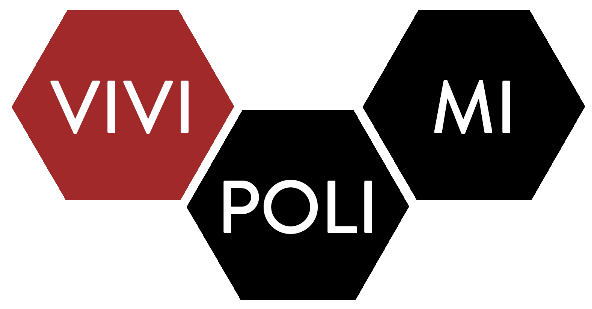
By focusing on the concept of Health, defined by the World Health Organization as “a state of complete physical, mental and social well-being, and not merely the absence of disease or infirmity“, the strategies and policies of transformation and regeneration of the Campus aim to promote proper lifestyles and create environments to protect the psycho-physical well-being of all occupants, from Students to Teachers, from Technical and Administrative Staff (PTA) to occasional users of the University who attend the Politecnico di Milano every day as part of their teaching and research activities.
The technical-scientific approach, applied to the Architecture project, involves the use of qualitative-quantitative tools for performance evaluation of the actions undertaken by VIVIPOLIMI in order to quantify the health benefits of the University’s users, whose results are based on previously conducted literature reviews. The objective is to define how experienced-based strategies such as Green & Blue Infrastructures, Playgrounds, Walkable Environments, Safety & Security and Design for All are able to improve wellness conditions, both outdoors and indoors. The reduction of the urban Heat Island Effect (HIE), the incentive to make choices to support daily physical activity and active transport, as well as cycle-pedestrian accessibility and ergonomics catering to all categories of users – through attention to all everyday situational disabilities that each individual might encounter – represent strategies of social inclusion that are placed at the centre of the concept and design implementation processes. Finally, also in the light of the recent social and health emergencies, the use of both indoor and outdoor IoT systems for monitoring, raising awareness and disseminating information on environmental and health conditions is considered experimental and a priority, taking advantage of digitisation that introduces the broader concept of Smart Cities & Communities.
At the same time, issues such as indoor air quality monitoring (IAQ) and proper sanitation and hygiene are considered of fundamental importance for the indoor environment. Ergonomics of spaces and Design for All are once again applied in order to create study and work environments that are as suitable as possible for the time users spend in the teaching and research areas. Also for the Indoor Environment, finally, the application of tools and techniques for digital control and evaluation of environmental parameters such as sunshine, ventilation and noise pollution will be tested, bearing in mind that—to recall the initial definition—each individual spends about 90% of everyday life in confined spaces, most often densely populated, with all the resulting risk factors for individual health.

